
Spy Hunter is a vehicular combat game developed by Bally Midway and released for arcades in 1984. The game draws inspiration from the James Bond films and was originally supposed to carry the James Bond brand. The object of the game is to drive down roads in the technologically advanced "Interceptor" car and destroy various enemy vehicles with a variety of onboard weapons. Spy Hunter was produced in both sit-down and standard upright versions with the latter being more common. The game's controls consist of a steering wheel in the form of a futuristic aircraft-style yoke with several special-purpose buttons, a two-position stick shift, and a pedal used for acceleration.

3D Monster Maze is a survival horror computer game developed from an idea by J.K. Greye and programmed by Malcolm Evans and released in 1981 for the Sinclair ZX81 platform with the 16 KB memory expansion. The game was initially released by J. K. Greye Software in December 1981 and re-released in 1982 by Evans' own startup, New Generation Software. Rendered using low-resolution character block "graphics", it was one of the first 3D games for a home computer, and one of the first games incorporating typical elements of the genre that would later be termed survival horror.

Stunt Car Racer is a racing video game developed by Geoff Crammond. It was published in 1989 by MicroProse, under their MicroStyle and MicroPlay labels in the United Kingdom and in the United States, respectively. The game pits two racers on an elevated track on which they race in a head-to-head competition, with ramps they must correctly drive off as the main obstacle.

Chaos: The Battle of Wizards is a turn-based tactics video game released for the ZX Spectrum in 1985. It was written by Julian Gollop and originally published by Games Workshop. Based on Gollop's 1982 design for a board game / card game hybrid, Chaos received a positive reception and went on to influence various games, including Darwinia and King's Bounty, and spawned a sequel, Lords of Chaos, in 1990.

Underwurlde is a 1984 action-adventure platform video game in the Sabreman series by Ultimate Play the Game for the ZX Spectrum and Commodore 64. The player controls the adventurer Sabreman as he jumps between platforms in a castle and its caverns to find an escape past the exit guardians. Underwurlde features about 600 flip screen areas. Unlike other games of its time, Sabreman is not injured when touched by enemies and is instead knocked backwards. Underwurlde is the second game in the series, between Sabre Wulf and Knight Lore, and released shortly before the latter for the ZX Spectrum in late 1984. Another developer, Firebird, ported the game to the Commodore 64 the next year.

Laser Squad is a turn-based tactics video game, originally released for the ZX Spectrum and later for the Commodore 64, Amstrad CPC, MSX, Amiga, Sharp MZ-800 and Atari ST and PC computers between 1988 and 1992. It was designed by Julian Gollop and his team at Target Games and published by Blade Software, expanding on the ideas applied in their earlier Rebelstar series. Laser Squad originally came with five mission scenarios, with an expansion pack released for the 8-bit versions, containing a further two scenarios.
Battlecars is a simple wargame based upon the Mad Max genre of a post-apocalyptic world dominated by aggressive, warring gangs. It was first published by Games Workshop in 1983 and the game designers were Gary Chalk and Ian Livingstone.
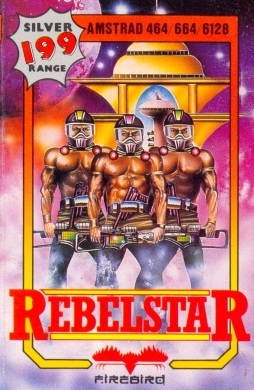
The Rebelstar games are a series of turn-based tactics video games designed by Julian Gollop. Rebelstar Raiders was published in 1984 by Red Shift for the ZX Spectrum. It was reworked in machine code as Rebelstar, published by Firebird in 1986. A sequel, Rebelstar II, was published in 1988 by Silverbird. Rebelstar, but not its sequel, was also adapted for the Amstrad CPC home computer.

Tornado Low Level is a multidirectional flight game developed by Costa Panayi and published in 1984 by the company he co-founded, Vortex Software. The game was first released for the ZX Spectrum, and later ported to the Amstrad CPC and Commodore 64.
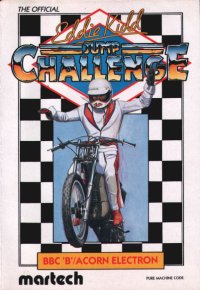
Eddie Kidd Jump Challenge is a stunt bike video game released for the Acorn Electron, BBC Micro, Commodore 64, MSX and ZX Spectrum first released in 1984, licensed by British stunt performer, Eddie Kidd.

Cybernoid: The Fighting Machine is a shoot 'em up developed and published in 1988 by Hewson Consultants for the ZX Spectrum. It was ported to the Amstrad CPC, Atari ST, Commodore 64, Amiga, and Nintendo Entertainment System. It was programmed by Raffaele Cecco. The ZX Spectrum, Amstrad, and Atari ST versions have a main theme by Dave Rogers, while the Commodore C64 version has a different theme by Jeroen Tel.
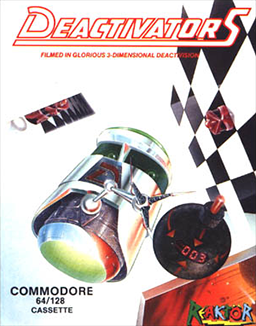
Deactivators is a 1986 puzzle video game designed by David Bishop and Chris Palmer, developed by Tigress Marketing and System Software, and published by Ariolasoft's action game imprint Reaktor. The player controls bomb disposal robots known as deactivators and must use them to deactivate bombs planted by terrorists in five research complexes. The concept for the game came from a brainstorming session between Bishop and Palmer; its design and development took five to six months to complete. It was released for the Amstrad CPC 464, Commodore 64, and ZX Spectrum platforms in October 1986.
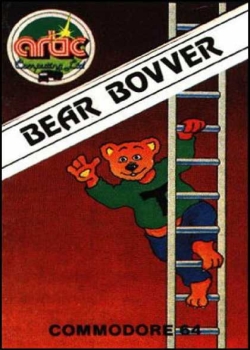
Bear Bovver is a platform game written by Jon Ritman for the ZX Spectrum and published in 1983 by Artic Computing. A Commodore 64 port was released in 1984. Bear Bovver is a BurgerTime clone, where batteries take the place of the burger ingredients.
Red Shift was a video game publisher active between 1983 and 1985. They were well known for their strategy games and had a close working relationship with Julian Gollop and Games Workshop.

The Dukes of Hazzard is a 1984 racing video game developed and published by Coleco for their ColecoVision game console and Coleco Adam computer. Elite Systems released a different game with the same title for the ZX Spectrum computer on February 23, 1985. Both versions are based on the television series of the same name.
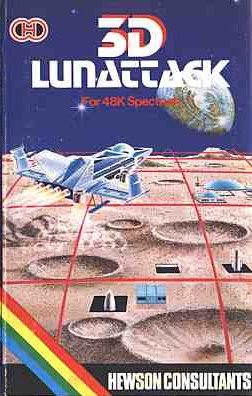
The Seiddab Trilogy is a series of video games designed by Steve Turner for the ZX Spectrum and published by Hewson Consultants. It consists of 3D Space-Wars (1983), 3D Seiddab Attack (1984), and 3D Lunattack. All three games were later published together as The Seiddab Trilogy by Hewson for the Rotronics Wafadrive. The series name is derived from the word "baddies" being spelt in reverse.

Light Force is a 1986 vertically scrolling shooter designed by Greg Follis and Roy Carter, developed by their company Gargoyle Games, and published under their Faster Than Light imprint. It was released for the Amstrad CPC, Commodore 64, and ZX Spectrum platforms.

Tensei Ryū: Saint Dragon is a horizontally scrolling shooter released as a coin-op by Jaleco in 1989. Ports to several home computer systems were published by Storm Entertainment in 1990. On February 6, 2020, Saint Dragon was released as part of Hamster's Arcade Archives lineup for the Nintendo Switch and PlayStation 4.
The Fury is a racing video game. It was developed by Creative Reality and published by Martech Games. It was released for the Amstrad CPC, Commodore 64, and ZX Spectrum in 1988. The box art was illustrated by Rodney Matthews.
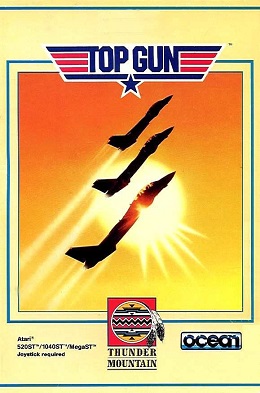
Top Gun is a 1986 combat flight simulation game based on the film of the same name. It was developed and published by British company Ocean Software, and was released for several computer platforms. In the United Kingdom, it was released for Amstrad CPC, Commodore 64, and ZX Spectrum in December 1986. The following year, it was released for Atari ST. In the United States, it was published by Thunder Mountain. In 1989, it was published by The Hit Squad as a budget re-release for ZX Spectrum and Commodore 64.




















